Hedera helix (ivy)
Hedera helix is one of the few woody lianes (vines) found in Britain, and is probably best known as the 'living curtain' clinging to many buildings and trees.
It is a woody, evergreen climber, and in suitable conditions can reach 30m high with stems up to 25cm in diameter, but it can also creep along the ground.
The stems are clothed in hair-like roots which are adhesive, enabling the plant to cling to hard surfaces.
It is one of the plants most closely associated with Christmas and produces flowers and fruits during the last months of the year.
Species detail

Ivy. © Forest & Kim Starr, Creative Commons Attribution 3.0 Unported
Uses for ivy
Ivy is often associated with holly as one of the evergreens still used to decorate houses and churches at Christmas - a custom deriving from pre-Christian times and once banned by the church because of these pagan associations.
Aside from its ornamental value, ivy has few uses nowadays beyond hiding ugly structures. It was thought to counter the effects of alcohol, hence its appearance as an accoutrement of Bacchus, Greek god of wine, and on inn signs.
-

Taxonomy
Ivy belongs to a family called Araliaceae and the genus Hedera. There are hundreds of ivy varieties, but botanists are still unsure how many separate species exist. Find out more.
-

Distribution and ecology
Ivy is native to Europe and western Asia, but has been introduced to many other countries. It can grow in a variety of conditions. Find out where.
-

Biology
Ivy is unusual because the young and mature plants of the species differ. Discover what differentiates the old from the young.
-

Behaviour
Ivy grows on trees, buildings and other structures and is often thought to have detrimental effects. But not everyone agrees. Find out more.
Images
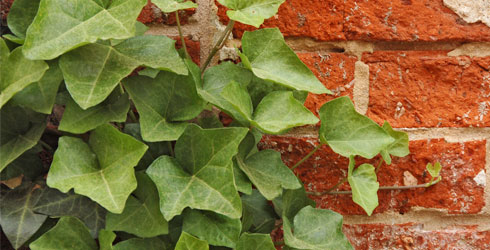
Ivy may exaggerate existing cracks and flaws but is unlikely to damage well-maintained walls.
GNU Free Documentation License
© Derek Ramsey (Ram-Man)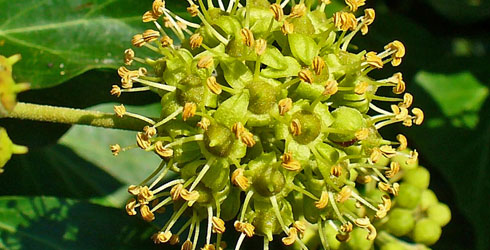
Ivy flowers appear late in the year.
© H Zell, Creative Commons Attribution-Share Alike 3.0 Unported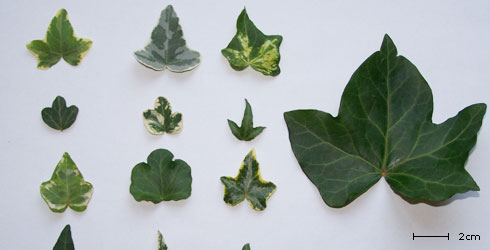
Ivy leaves are very variable. The leaf on the right is the normal type, the others are examples of common cultivars.
© Magpie Ilya, Creative Commons Attribution-Share Alike 3.0 Unported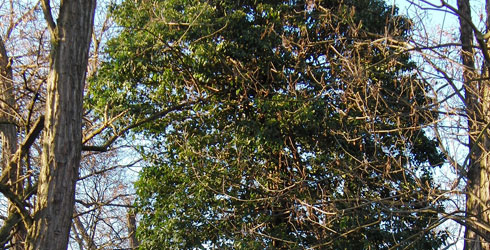
Rampant ivy growth is claimed to damage or even kill trees. This tree died after the ivy became established, but the two events are not necessarily connected. The skeleton of the tree forms a frame on which the ivy continues to flourish.
© Rosetta, public domain
Ivy will grow up any suitable surface.
© Lamiot, Creative Commons Attribution-Share Alike 3.0 Unported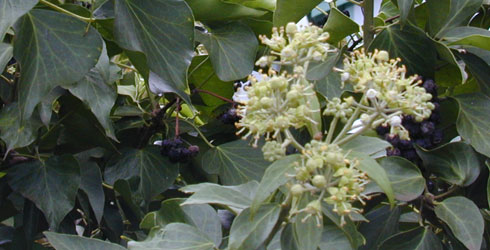
Ivy flowers and fruits are borne on so-called adult growth. These stems are only produced in full sun and the leaves lack the familiar lobes.
© Forest & Kim Starr, Creative Commons Attribution 3.0 Unported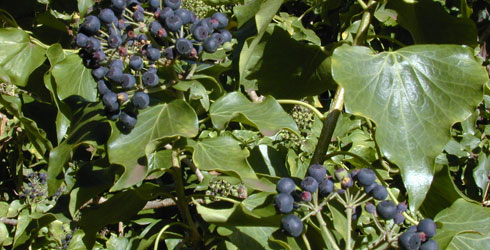
Ivy berries ripen in spring and are a useful food source for fledgling birds.
© Forest & Kim Starr, Creative Commons Attribution 3.0 Unported
When vertical surfaces are absent, ivy is quite happy to creep along the ground.
© Forest & Kim Starr, Creative Commons Attribution 3.0 UnportedAuthor
Bob Press
Former Associate Keeper of Botany
Department of Botany
A word from the author
"Ivy (Hedera helix) is a rather maligned plant, often believed to be a danger to the trees and buildings that so often support it. For many years it was thought to be a single species but recent research suggests there are several, closely related but geographically well-defined species."

